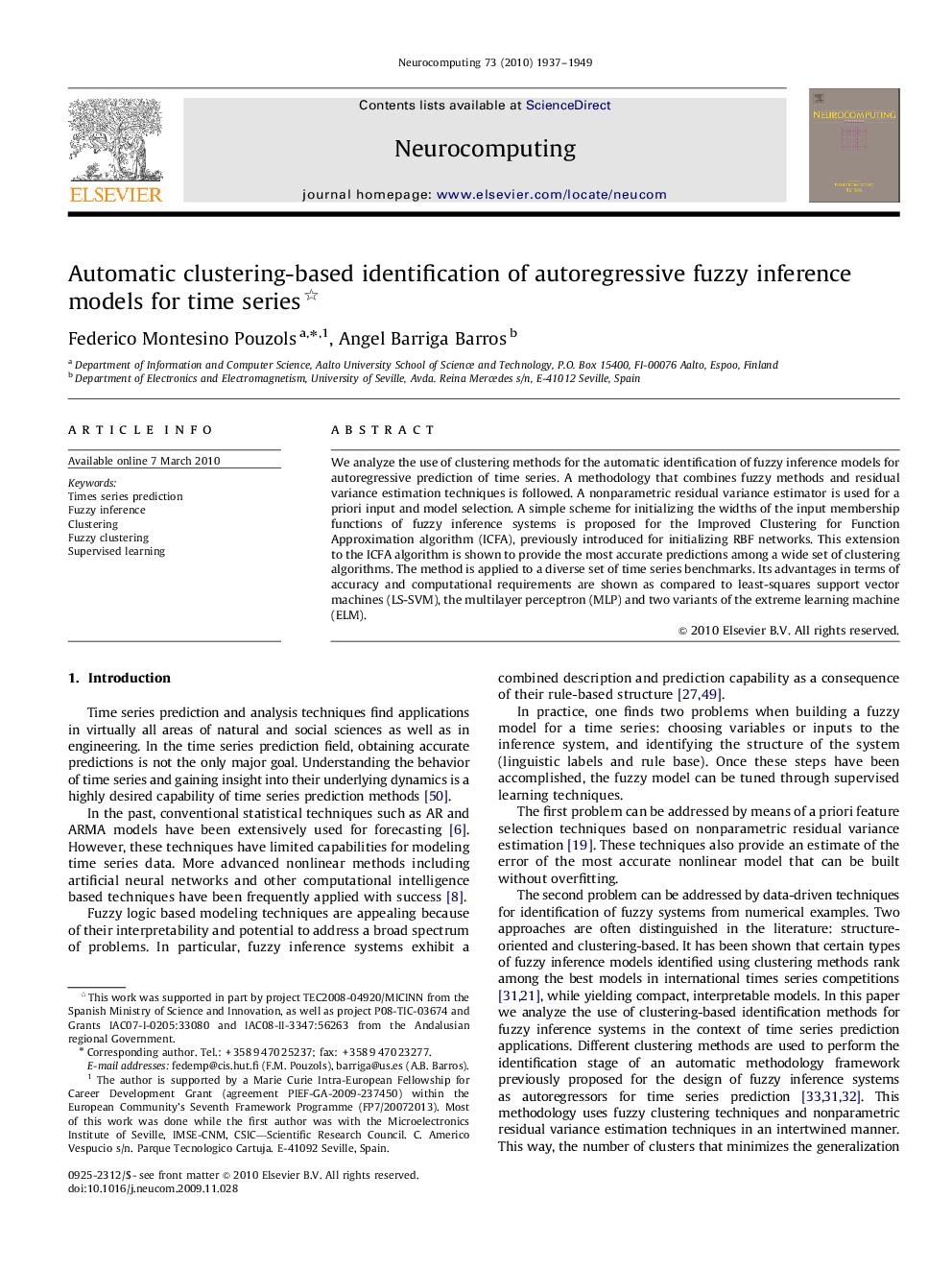| Article ID | Journal | Published Year | Pages | File Type |
|---|---|---|---|---|
| 412812 | Neurocomputing | 2010 | 13 Pages |
We analyze the use of clustering methods for the automatic identification of fuzzy inference models for autoregressive prediction of time series. A methodology that combines fuzzy methods and residual variance estimation techniques is followed. A nonparametric residual variance estimator is used for a priori input and model selection. A simple scheme for initializing the widths of the input membership functions of fuzzy inference systems is proposed for the Improved Clustering for Function Approximation algorithm (ICFA), previously introduced for initializing RBF networks. This extension to the ICFA algorithm is shown to provide the most accurate predictions among a wide set of clustering algorithms. The method is applied to a diverse set of time series benchmarks. Its advantages in terms of accuracy and computational requirements are shown as compared to least-squares support vector machines (LS-SVM), the multilayer perceptron (MLP) and two variants of the extreme learning machine (ELM).
